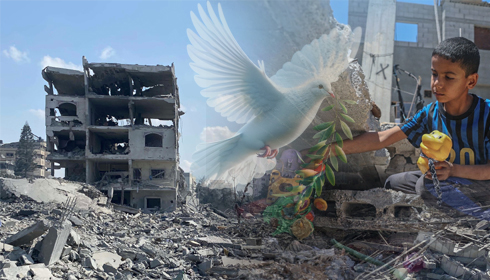
Independent Study Reveals Severe Underreporting of Deaths in Gaza Conflict, Raising Concerns Over Civilian Safety
An independent study conducted by researchers at the London School of Hygiene & Tropical Medicine (LSHTM) has revealed a substantial underreporting of deaths in Gaza due to violence during the conflict period from 7 October 2023 to 30 June 2024. According to the findings, published in The Lancet, the actual death toll is estimated to be 64,260 — approximately 41% higher than the 37,877 deaths reported by the Palestinian Ministry of Health.
The implications of this study are stark, highlighting both the devastating human toll of the ongoing conflict and the collapse of essential systems in Gaza, including healthcare and vital record-keeping. Using the sophisticated ‘capture-recapture analysis’ method, researchers compared data from hospital morgues, an online survey, and social media obituaries. This statistical approach, typically used to estimate elusive or underreported populations, underscores the scale of loss and the chaotic conditions under which data is being collected.
The study points to a broader issue, the catastrophic deterioration of Gaza’s healthcare infrastructure. With hospitals overrun, morgues overflowing, and medical supplies dwindling, the capacity to provide accurate records of deaths has been severely compromised. The underreporting problem is symptomatic of a health system unable to cope with the compounded impact of war, siege, and years of underfunding.
Health experts warn that this scenario exacerbates other crises. “When a health system collapses, it’s not just trauma deaths that increase,” said a humanitarian health advisor familiar with conflict zones. “We see a spike in deaths from preventable diseases, malnutrition, and even complications from chronic conditions, as basic healthcare becomes inaccessible.”
One of the most alarming findings from the study is the demographic breakdown of the casualties. Approximately 59% of those who died were women, children, and the elderly, populations considered to be particularly vulnerable during armed conflicts. This finding corroborates ongoing reports from human rights organizations that civilian casualties in Gaza have reached unprecedented levels.
“The UN's Human Rights Office has already condemned the high number of civilians killed in the war in Gaza, and our findings suggest that the traumatic injury death toll is underreported by around 41%,” said Zeina Jamaluddine, lead author of the study. “These results underscore the urgent need for interventions to safeguard civilians and prevent further loss of life.
While the LSHTM study focuses on trauma-related deaths, experts caution that the true toll of the conflict extends beyond what has been quantified. Deaths due to secondary factors—such as the disruption of healthcare services, lack of access to clean water, food insecurity, and outbreaks of disease—are not reflected in the study’s estimates. Humanitarian organizations have repeatedly sounded alarms over deteriorating living conditions in Gaza, warning that a public health crisis looms as essential infrastructure continues to collapse.
A report by the World Health Organization (WHO) noted that more than half of Gaza’s healthcare facilities were either non-functional or severely restricted in their operations due to damage and resource shortages. With clean water supplies dwindling and food imports hampered, malnutrition and disease outbreaks, including cholera and typhoid, have become imminent threats.
The study has reignited calls for immediate international intervention to protect civilians and ensure humanitarian aid reaches those in need. Observers point to the role of international actors in providing not only emergency relief but also diplomatic pressure to bring an end to the violence.
“The figures we see in this study are not just statistics. They represent lives lost, families shattered, and a generation traumatized by conflict,” said a senior analyst at a conflict monitoring organization. “Without international pressure, there’s little hope for a meaningful ceasefire or long-term peace. This crisis demands urgent global attention.”
Beyond immediate humanitarian concerns, the findings raise critical questions about accountability and future reconstruction efforts in Gaza. With over 3% of the population estimated to have died due to violence, the scale of loss demands thorough investigation and accountability for potential war crimes. Moreover, the rebuilding of Gaza’s health system, infrastructure, and economy will require sustained international support.
As the death toll likely continues to rise, there is growing consensus that the world cannot afford to ignore the unfolding humanitarian catastrophe. The LSHTM study serves as a grim reminder of the costs of inaction, urging global leaders to prioritize peace and the protection of civilian lives in one of the most densely populated regions on earth.
“We hope our findings will inform policymakers and aid organizations,” Jamaluddine added. “Every effort must be made to end the violence and provide immediate humanitarian relief to those who are suffering.”
The LSHTM report sheds light on a critical gap in the reporting of conflict-related deaths in Gaza, revealing not only the immense scale of human loss but also the urgent need for comprehensive humanitarian and diplomatic interventions. As the war grinds on, the international community faces a moral imperative: to protect the lives of civilians and to work toward a lasting resolution that ensures such tragedies are not repeated.